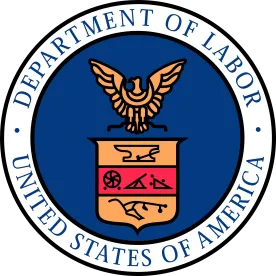Employers frustrated with the cumbersome rules and added expenses for furnishing plan documents, summary plan descriptions, notices, and certain other communications may soon get some added relief, at least with respect to their retirement plans. In response to President Donald J. Trump’s Executive Order 13487, Strengthening Retirement Security in America, the U.S. Department of Labor announced a proposed rule to allow online retirement plan disclosures.
According to U.S. Secretary of Labor Eugene Scalia, the DOL’s proposed rule could help “save billions of dollars in costs for the U.S. economy” by “eliminat[ing] unnecessary burdens while furthering the needs of the wage earners, job seekers, and retirees of the United States.” According to the proposed rule, the DOL believes its policy objectives may be best advanced through adoption of a “notice and access” structure, similar to that previously adopted by the Department in FAB 2006-03. In short, this means that plan participants would be notified that information is available online, including instructions for how to access the disclosures and their right to receive paper copies of disclosures.
Some features of the proposed rule include:
-
A new safe harbor. The proposed rule would not replace or modify the existing rules for electronic disclosures. It would add a new safe harbor. And, administrators who choose to rely on the proposed rule would continue to be subject to applicable content, timing, and other provisions.
-
Pension plans only. The proposed rule currently applies only to pension benefit plans as the DOL currently is reserving application of the rule to welfare benefit plans. We suspect many employers will be disappointed considering welfare plan disclosures can be far more voluminous.
-
Covered individuals. Retirement plan disclosures under the proposed rule could be sent to “covered individuals” -participants, beneficiaries, or other individuals entitled to covered documents and who provide an electronic address. This could include the employer-provided email or a personal information, among other options.
-
Covered documents. The new safe harbor can be applied to furnish any document that the administrator is required to furnish pursuant to Title I of ERISA for a pension benefit plan, except any document that must be furnished upon request, such as under ERISA Sec. 104(b). Examples of documents that can be furnished in this manner include a summaries of material modification or blackout notices.
-
Notice of internet availability. In general, administrators must provide a notice of internet availability for each covered document they plan to provide under the new safe harbor. So, if there are eight different documents, eight different notice of internet availability must be provided. However, there are rules for consolidating these notices.
-
Timing of notice of internet availability. Administrators must furnish notices of internet availability at the time the covered document that is the subject of the notice is made available on the website. Thus, for example, if pension benefit statements must be furnished no later than April 15th of a given year, the administrator could satisfy that obligation by furnishing to covered individuals a notice of internet availability on April 15th and ensuring that the covered document is accessible on the website on that date.
-
Content of notice of internet availability. The notice must include: (i) a prominent statement, such as a subject line that reads, “Disclosure About Your Retirement Plan;” (ii) a statement that, “Important information about your retirement plan is available at the website address below. Please review this information;” (iii) a brief description of the covered document; (iv) the website address where the covered document is available; (v) a statement of the right to request and obtain a paper version of the covered document, free of charge, and an explanation of how to exercise this right; (vi) a statement of the right to opt out of receiving covered documents electronically, and an explanation of how to exercise this right; and (vii) a telephone number to contact the administrator or other designated plan representative. The website address either should lead the covered individual directly to the covered document or to a login page that provides, or immediately after logging in provides, a prominent link to the covered document.
-
Form and manner of furnishing notice of internet availability. The notice of internet availability would need to be clear and concise, convey its importance, and easily call the recipient’s attention to its content. To that end, the proposed rule would establish standards for the form and manner of furnishing the notice. Among other things, the notice must be furnished separately from any other documents or disclosures furnished to covered individuals, subject to some exceptions, and be written in a manner calculated to be understood by the average plan participant. The DOL specifically mentioned use of “short sentences without double negatives, everyday words rather than technical and legal terminology, active voice, and language that results in a Flesch Reading Ease test score of at least 60” to meet this requirement.
-
Severance from employment. The proposed rule also contemplates the need to continue to furnish information following an employee’s severance from employment. In that case, the administrator will need to take measures reasonably calculated to ensure the continued accuracy of the covered individual’s electronic address or number. So, employers might make requesting a new email address part of their employment termination procedures.
We expect many employers and administrators will be tracking the development of the proposed rule very closely considering the potential simplification of a significant aspect of plan administration. For interested parties that have questions or comments, such as whether welfare plans are going to be added, comments will be accepted by the DOL during the 30 day period following October 23, 2019, the expected publication date. Note, however, that employers may not rely on this proposed rule unless and until it is published in final form.




 />i
/>i

